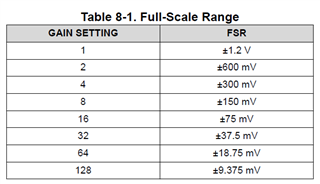Hello.
We are needing to develop a project of an IoT, Wifi + BLE + LoRa, 3-phase energy meter. The project is a voltage, current and energy meter for industrial machines. After several researches about what to use for the analog hardware, I found that the IC of Texas Instruments ADS131M06 is a very good choice.
For the analog hardware, I did an initial schematic, just for study and to post here in the forum, to check what the engineers of TI could say about it, and also I would like to ask some questions. My current schematic is attached in PDF. In the schematic, it is shown the circuits only for one current input and for one voltage input. After the circuit is defined, I will multiply it for 3 currents and 3 voltages.
I have put the numbers and some explanation directly on the schematic.
The PGA would be set for a gain of 8 in all the 6 input channels, in which the full-scale range is +- 150mV, and in which the input impedance is >= 1 M Ohms according to what is shown in the first page of the datasheet.

The following is important to highlight: we don't need so much precision on the measurements. 16 bits would be enough, 18 bits would be more than enough. This means that, even if the conversions are always 24 bits, we could discard and not consider the 8 or 6 least significant bits in the firmware. For us, one of the main advantages of this IC of TI, ADS131M06, is that it has 6 differential inputs, and that they are sampled at the same instant/moment.
Then, regarding what is written above, about the resolution, I did not understand the table that is shown on the datasheet on page 18/109, I mean about the "Effective Resolution". I will place this table below. The preference would be for a faster sample rate, of 16k or 32k samples/s, so according to the table below I have understood that to simplify the things, if I choose a 16k sample rate, the effective resolution will be of 16 bits. I am a little unsure about this table, could you give me, please, some extra explanation?

My last question is about my schematic. The voltage reference is the internal 1.2V +- 0.1%. If I set all 6 inputs with a PGA gain of 8, the full-scale range will be +- 150mV, then, how many microvolts each bit, bit 23 (MSB) to bit 0 (LSB), of the conversion result, will represent? Or maybe, how many microvolts each unit of the value of the ADC result will represent? This will depend on the resolution, but I have doubts about it and I am unclear to express it at the moment.
I'm sorry if I could not be clear in my post, we can discuss more with the time.
Regards,





